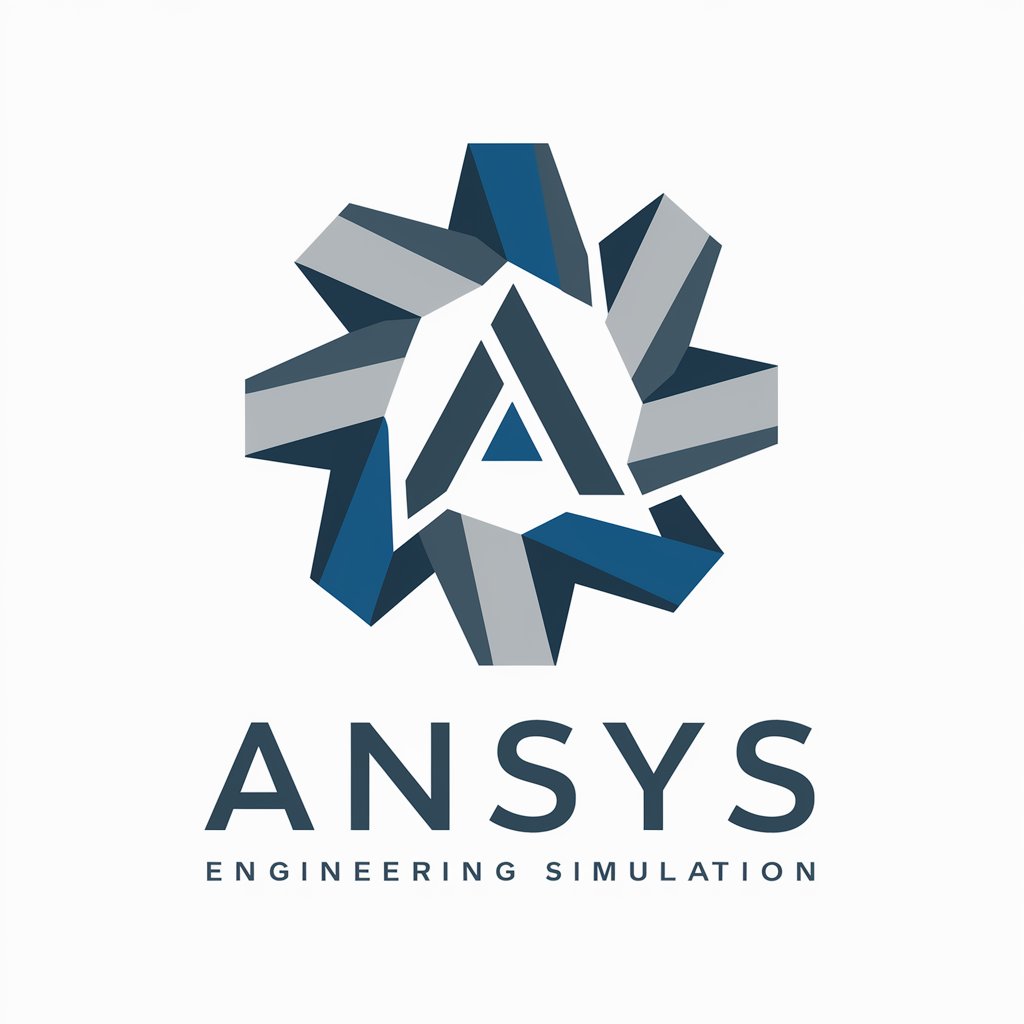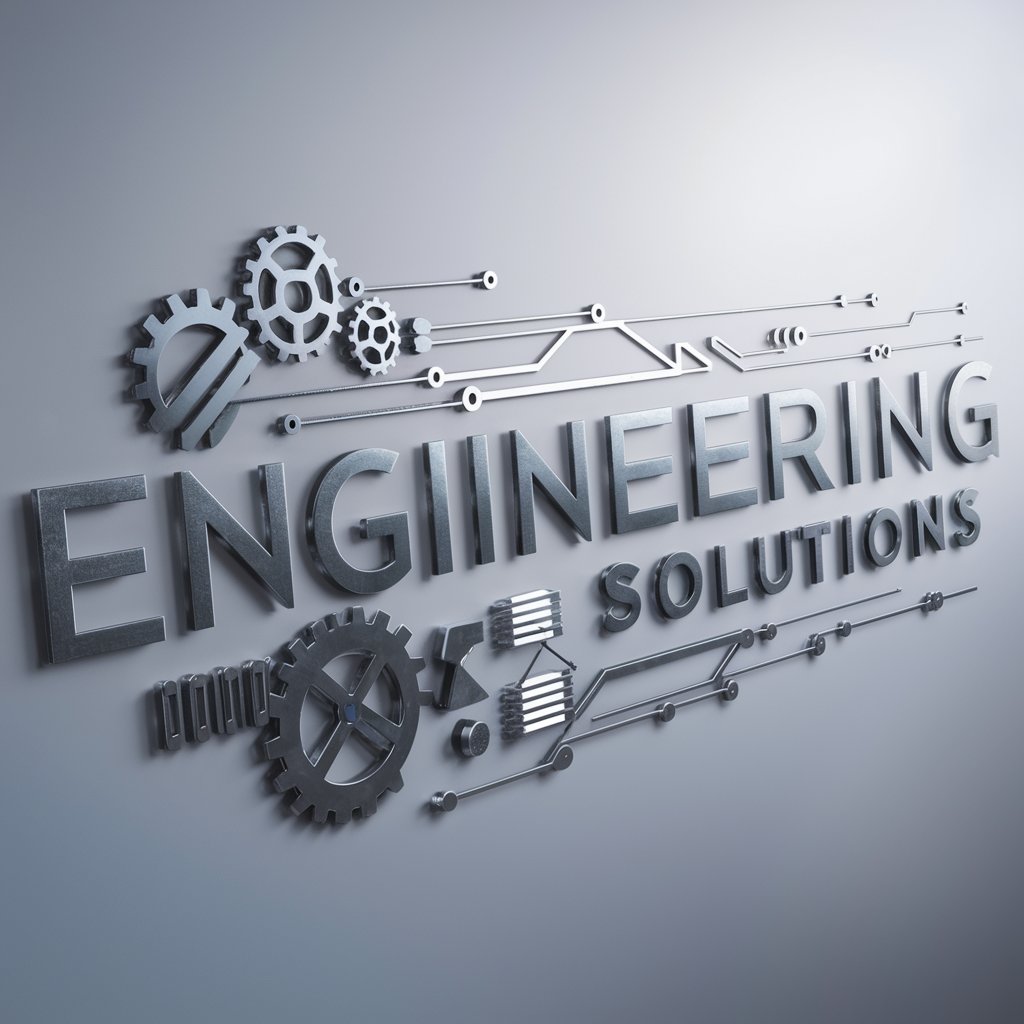
Ansys Engineering Simulation - intuitive engineering simulation

Welcome to Ansys Engineering Simulation! How can I assist with your simulation needs today?
Empower design with AI-driven simulation
Describe the process of setting up a CFD simulation in Ansys Fluent, including mesh generation and boundary conditions.
Explain how to use Ansys Fluent to simulate combustion in a gas turbine engine, detailing the necessary chemical mechanisms.
Outline the steps to create a custom UDF in Ansys Fluent for modeling heat transfer in complex geometries.
Discuss the integration of Ansys Fluent with a load manager for optimizing computational resources during large-scale simulations.
Get Embed Code
Introduction to Ansys Engineering Simulation
Ansys Engineering Simulation is a comprehensive suite of software tools designed to simulate and predict the performance of products and systems in the real world across a wide range of industries and applications. It enables engineers and designers to create virtual prototypes of their designs, conduct various analyses, and optimize their products for performance, safety, and efficiency without the need for physical prototypes. Examples of applications include fluid dynamics simulations to predict airflow around an aircraft, structural analysis to determine stress and deformation under load in a bridge design, and electromagnetic field simulations for improving antenna performance. Powered by ChatGPT-4o。

Main Functions of Ansys Engineering Simulation
Fluid Dynamics Simulation
Example
Aerospace engineers use fluid dynamics simulations to analyze and optimize the aerodynamic performance of aircraft, reducing drag and improving fuel efficiency.
Scenario
An aerospace company wants to design a new wing profile for their next-generation commercial airliner. Using Ansys Fluent, they simulate airflow around various wing designs to find the optimal shape that minimizes drag and maximizes lift.
Structural Mechanics Simulation
Example
Civil engineers leverage structural mechanics simulations to assess the strength and durability of buildings, bridges, and other infrastructures under various loads and conditions.
Scenario
A civil engineering firm is tasked with designing a suspension bridge. They use Ansys Mechanical to simulate the bridge's response to various loads, such as heavy traffic and strong winds, ensuring the design meets safety and performance criteria.
Electromagnetic Simulation
Example
Electrical engineers use electromagnetic simulations to design and optimize components like antennas, motors, and sensors for better performance and energy efficiency.
Scenario
An electronics manufacturer wants to develop a new, more efficient antenna for a smartphone. They use Ansys HFSS to model and simulate the electromagnetic fields generated by different antenna designs to maximize signal strength and minimize interference.
Multiphysics Simulation
Example
Automotive engineers use multiphysics simulations to assess the interaction between different physical phenomena, such as thermal effects on battery performance in electric vehicles.
Scenario
An automotive company is developing a new electric vehicle. They employ Ansys multiphysics capabilities to simulate the thermal management system of the battery pack, ensuring it operates within safe temperature ranges under various driving conditions.
Ideal Users of Ansys Engineering Simulation Services
Product Designers and Engineers
Individuals involved in the design and development of products across industries like aerospace, automotive, electronics, and healthcare benefit from Ansys to validate designs, optimize performance, and accelerate product development cycles.
Research and Development (R&D) Teams
R&D professionals in academia, government, and industry use Ansys for innovative research projects, exploring new concepts and technologies by simulating experiments that might be impractical or impossible to conduct physically.
Quality Assurance and Regulatory Compliance Professionals
These users employ Ansys simulations to ensure products meet industry standards and regulatory requirements, reducing the risk of product failures and recalls.
Sustainability and Environmental Engineers
Engineers focusing on sustainability use Ansys to design more energy-efficient products, reduce waste, and assess environmental impact, supporting the development of greener technologies.

Using Ansys Engineering Simulation
1
Start your journey at a platform offering a complimentary experience without the need to sign in, just like visiting yeschat.ai for a hassle-free trial.
2
Ensure your system meets the required hardware and software specifications for running Ansys simulations effectively, including a robust processor, ample RAM, and a compatible operating system.
3
Familiarize yourself with the Ansys Workbench interface. Start by creating a new project and importing your geometry or creating one using Ansys design modeler.
4
Select the appropriate physics setup for your simulation. This could range from structural mechanics to fluid dynamics, based on your project needs.
5
Run the simulation and analyze the results using Ansys post-processing tools. Make adjustments as needed for optimizing your design or analysis.
Try other advanced and practical GPTs
GPT for Modelling System Dynamics
AI-powered modeling and simulation guidance

Budget Buddy
Your AI-powered Financial Advisor

Mindful Mentor
Empowering Mindfulness with AI

Essay Assistant
Craft Your Essays with AI Precision

Zoom アシスタント
Elevate Your Zoom Experience with AI

UR Summary
AI-powered summaries for any text

Excel Financial Model Prof / Review
Elevate Your Models with AI-Powered Financial Expertise

K Mob
Empowering your academic pursuits with AI

La Mob
Crafting Memorable Brand Universes

CMG : THE MOB
Power your CMG knowledge with AI.

Market Matchmaker: Your AI Guide for Selling Smart
Maximize Your Market Impact

System 2
Empowering Decisions with AI

FAQs about Ansys Engineering Simulation
What types of engineering problems can Ansys solve?
Ansys Engineering Simulation can solve a wide array of engineering problems including structural analysis, thermal dynamics, fluid mechanics, electromagnetics, and multiphysics simulations.
Is Ansys suitable for beginners?
Yes, while Ansys offers advanced features for professionals, it also provides intuitive interfaces and tutorials that make it accessible for beginners.
Can Ansys simulate real-world conditions?
Absolutely. Ansys is designed to simulate real-world conditions, allowing engineers to test how products perform under various physical and environmental conditions without the need for physical prototypes.
How does Ansys handle data from other CAD software?
Ansys is compatible with most major CAD software. It can import geometry directly from these programs, facilitating a seamless integration into your design and analysis workflow.
What are the hardware requirements for running Ansys?
Running Ansys effectively requires a computer with a powerful processor, high RAM (16GB or more recommended), and a dedicated graphics card. The specifics depend on the complexity of your simulations.





